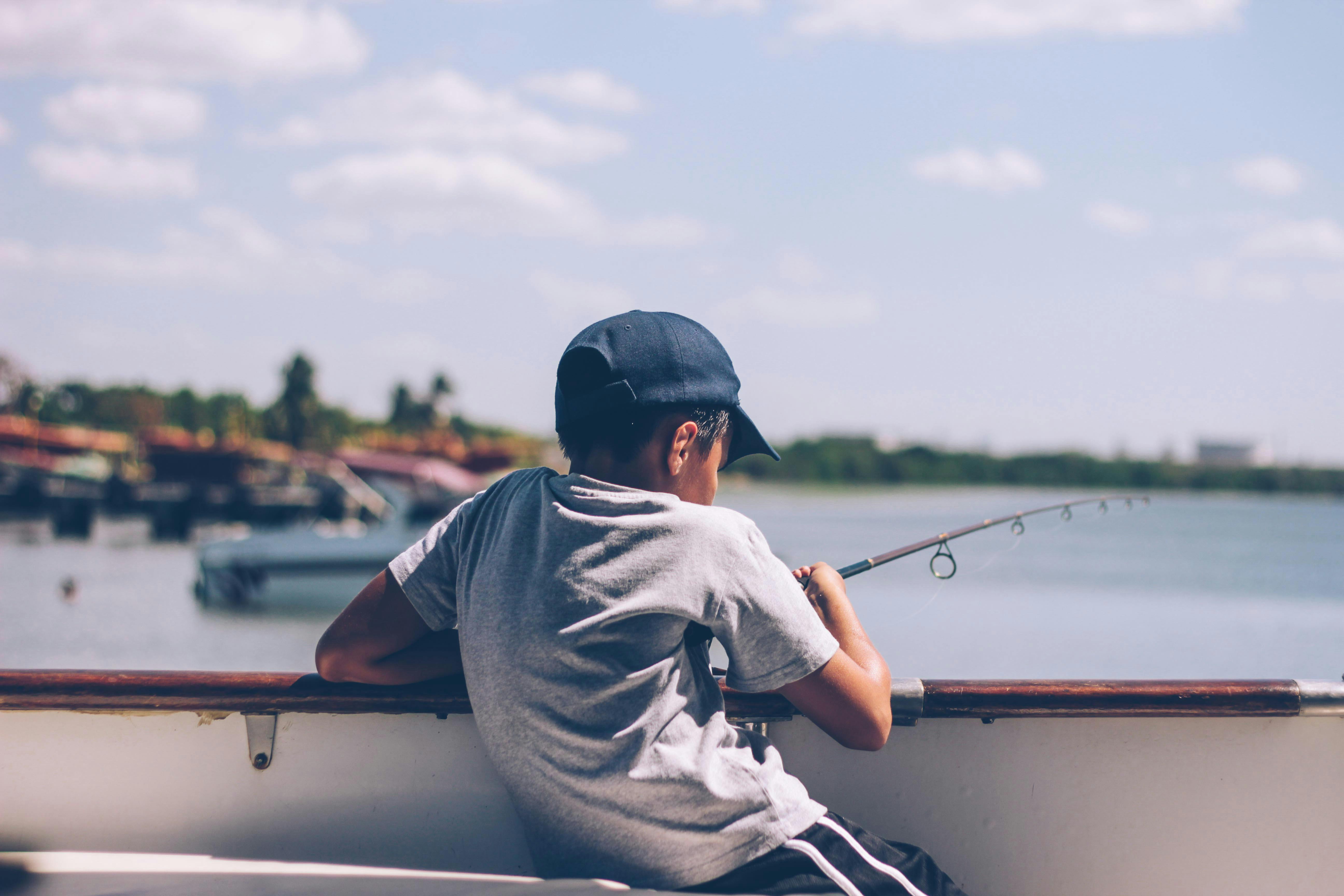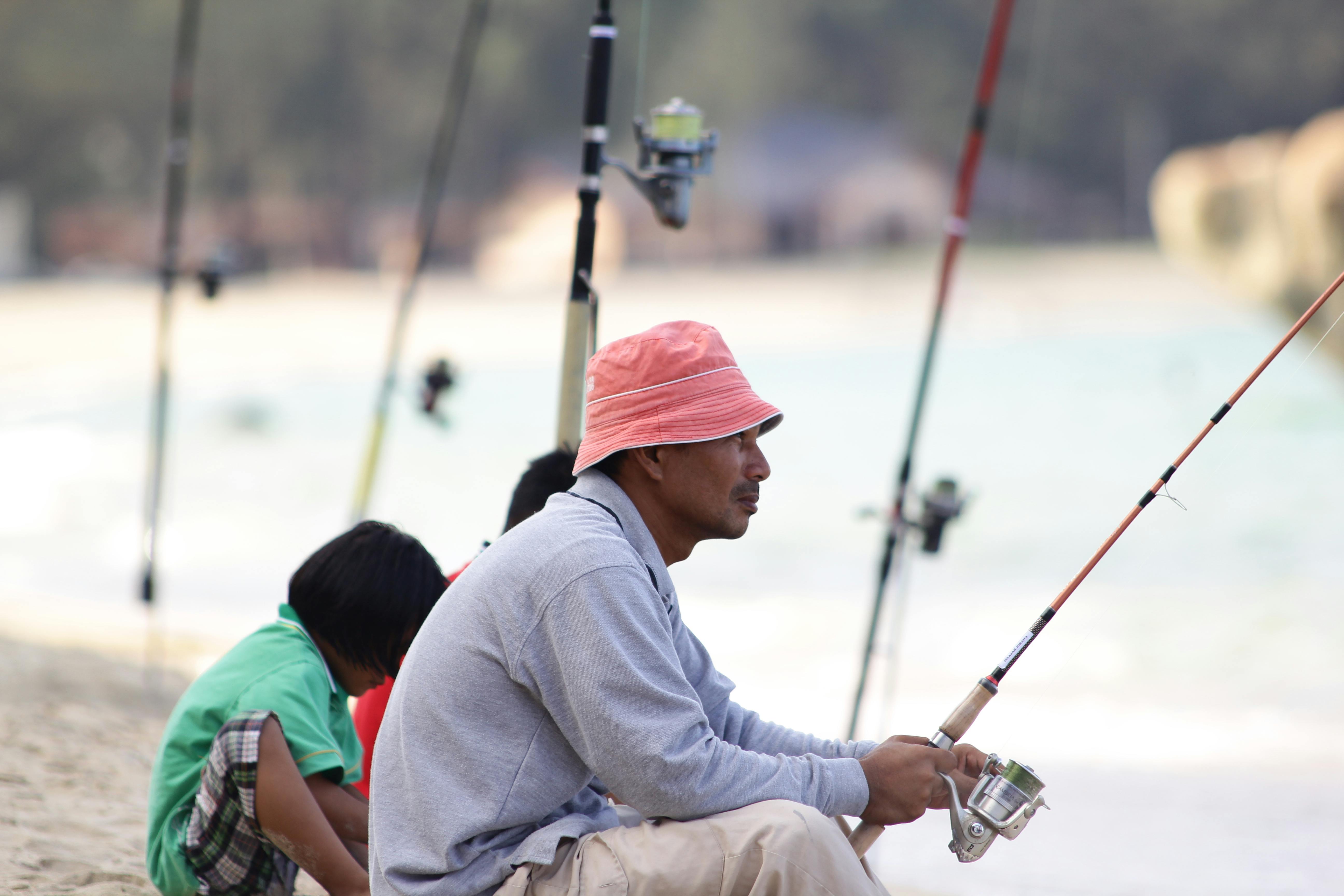What To Wear Fishing

Footwear for Fishing
When it comes to fishing, having the right kind of footwear is essential. The right pair of shoes can make a big difference in your comfort and performance. From wading boots to deck shoes, there are many styles of fishing footwear available. Each type has its own advantages and disadvantages, so it is important to choose the right pair for your needs.
Wading boots are designed for use in shallow water and mud. They provide excellent traction and support on slippery surfaces, as well as additional ankle protection. Wading boots also come in various materials, such as rubber or leather. Depending on the style, they may also feature toe guards or extra padding for added protection.
Deck shoes are designed specifically for boat fishing. They are lightweight and typically feature non-slip soles to provide extra traction on wet decks. Deck shoes also offer more flexibility than wading boots, making them more comfortable for long days on the water.
In addition to wading boots and deck shoes, there are also a variety of other types of fishing footwear available. Neoprene booties provide extra warmth in cold waters, while sandals offer breathability and air circulation during hot summer months. No matter what type of fishing you do, it is important to choose the right type of footwear to ensure a safe and enjoyable experience on the water.
Layering Your Fishing Clothes
Fishing in the great outdoors can be a very enjoyable activity, but it can also be very uncomfortable if you are not properly dressed. Layering your clothing is the best way to ensure that you are comfortable while fishing. Layering allows you to put on or take off items of clothing as the weather changes or to adjust for different activities. It is important to choose fabrics that are lightweight, breathable and offer some protection from wind and water. Start with a base layer designed to keep you warm and dry, such as a long-sleeved shirt and thermal leggings or pants. Over this, wear an insulation layer such as a fleece jacket or vest. This will help trap your body heat and keep you warm when temperatures drop. Finally, add an outer layer such as a waterproof jacket or raincoat for added protection from wind and rain. Make sure that all of your layers fit comfortably so that you can move freely while fishing.
In addition to layering your clothing, it is also important to wear proper footwear when fishing. Choose shoes or boots that provide good support and have non-slip soles for better traction on wet surfaces. If you plan on wading into the water, make sure your footwear is waterproofed so that it doesn’t get saturated with water and become uncomfortable or hazardous to wear. Also consider wearing gloves if your hands tend to get cold easily – this will help keep them warm while fishing in cooler temperatures.
Layering your clothing correctly when fishing can make a huge difference in how comfortable and successful your outing is. Be sure to choose appropriate fabrics suitable for the conditions you will be facing – this will ensure that you stay warm, dry and comfortable while enjoying the great outdoors!
Personal Protective Gear for Fishing
Fishing comes with a certain degree of risk. To ensure maximum safety, it is important to wear the right protective gear when fishing. This includes wearing a life jacket, sun protection clothing, and also footwear suitable for fishing. A life jacket is essential for anyone who is going out fishing, especially in deep waters. It provides buoyancy and helps to keep the body afloat in case of an emergency. Sun protection clothing should also be worn to protect against the sun’s harmful UV rays. Long sleeves and hats are recommended for added protection from the sun. Finally, it is important to wear footwear suitable for fishing such as boots or waders as they will provide more traction and stability while on the boat or shoreline.
In addition to wearing the right protective gear, it is also important to practice safety measures when out on the water. Always check local laws regarding boating and fishing regulations before heading out on the water and make sure that your boat is equipped with all necessary safety equipment such as flares, whistles, and life jackets for everyone on board. Lastly, pay attention to weather forecasts so you can prepare appropriately for changing conditions while out on the water. Taking these precautions will help ensure a safe and enjoyable fishing experience!

Must-Have Accessories for Fishing
Fishing is an enjoyable and relaxing activity, but it does require some basic equipment and accessories. Knowing what type of fishing gear to have on hand can make the difference between a successful day of fishing and one that ends in disappointment. Here are some must-have accessories for fishing to help you get started:
Rod and Reel: A good rod and reel are essential for any angler. Choose a rod that is suitable for the type of fish you’re targeting, such as a spinning or baitcasting reel for heavier fish or a fly rod for lighter game. Make sure the rod is strong enough to handle your catch, but light enough that it won’t tire you out when casting.
Lures and Bait: Lures and bait will help attract the fish to your line. Artificial lures can be great for catching larger game fish, while live bait such as worms or minnows can be used when targeting smaller species. Experiment with different types of lures and baits to find out which works best in your area.
Fishing Line: Fishing line comes in many different materials, weights, sizes, and colors. You’ll want to choose a line that is strong enough to handle the type of fish you’re trying to catch while still being thin enough to cast easily. Monofilament line is an all-purpose option that works well in most conditions.
Hooks: You’ll need hooks of various sizes depending on the type of fish you’re targeting. Look for hooks with barbs that will help hold the bait more securely on the hook so it won’t come off when casting or retrieving the line.
Bait Boxes: Having a small bait box will make it easier to store your bait and keep your tackle organized while fishing. Bait boxes come in various sizes so you can choose one that suits your needs.
Net: A net is an important tool when landing larger fish since it helps keep them contained while also protecting them from harm. Make sure you get one made from durable material so it will last many seasons of use.
These are just some of the must-have accessories every angler should have on hand before heading out on their next fishing adventure. With these essential items on hand, you’ll be prepared for whatever comes your way!
Choosing the Right Colors for Fishing Clothes
When it comes to fishing, having the right clothes can make a big difference. The right colors can help you blend in with your environment, so that you don’t draw attention to yourself and scare away any fish. It’s important to choose colors that will allow you to blend in with your surroundings while still looking stylish. Here are a few tips for choosing the right colors for your fishing clothes:
Opt for Neutral Colors: Natural shades such as green, tan, and brown are ideal for fishing clothes as they help you blend in with your environment without standing out too much. A combination of dark and light colors is also a good option as it will make you visible yet subtle.
Choose the Right Shade of Color: While choosing colors for your fishing clothes, pick shades that match the environment around you. For instance, if you’re fishing on a lake or pond surrounded by grass and trees, opt for shades that will help you blend in with the greenery. Similarly, if you’re fishing on an open beach or shoreline, choose shades of blue and gray that match the color of the water.
Consider Your Environment: The type of environment you’ll be fishing in will determine which colors are best suited for your clothing. For example, if you’ll be fishing in murky water, then light colored clothing is recommended as it will make it easier to spot any fish in the area. On the other hand, if you’ll be fishing in clear waters then darker colored clothing would be better suited since it won’t reflect off of the water as much as lighter shades do.
Keep Weather Conditions in Mind: The weather conditions should also be considered when picking out appropriate colors for your fishing clothes. Darker colored clothing is usually more appropriate during cooler temperatures or when inclement weather is expected as they provide more warmth than lighter colored clothing does. In contrast, lighter colored clothing is recommended when it’s hot outside as these hues can help keep you cool by reflecting away some of the heat from sunlight.
By taking all these factors into consideration when selecting colors for your fishing clothes, you can ensure that not only do they look stylish but also provide camouflage against any potential predators while still allowing you to spot any fish in the area more easily.
Selecting the Right Fabrics for Fishing Clothes
Fishing can be an enjoyable experience, but it can also be a bit uncomfortable if you don’t dress properly. Choosing the right fabrics for your fishing clothes is essential to ensure a comfortable and enjoyable experience. The fabric needs to be lightweight, breathable, and durable enough to withstand prolonged exposure to the elements. It should also provide protection from the sun’s harmful UV rays. Here are some of the best fabrics for fishing clothes:
Cotton: Cotton is a lightweight and breathable fabric that is comfortable to wear in all types of weather. It is also one of the most affordable materials on the market. Cotton is great for keeping you cool in hot weather and warm in cooler temperatures. However, it does not provide much protection from UV rays or water, so it may not be ideal for fishing in sunny or wet conditions.
Polyester: Polyester is a lightweight synthetic material that is both breathable and durable. It resists wrinkles and maintains its shape over time, making it ideal for fishing garments that need to last a long time without losing their shape or style. Polyester also offers good protection from UV rays and water, making it a good choice for water-based activities such as fishing.
Nylon: Nylon is another lightweight synthetic material that is both breathable and durable. It has excellent stretch properties, allowing it to move with your body as you fish without feeling constricting or uncomfortable. Nylon also provides good protection from UV rays and water, making it an ideal choice for any type of fishing activity.
Wool: Wool is a natural fiber that has excellent insulating properties, making it perfect for cold weather fishing trips or those spent in colder climates. It offers excellent protection from both UV rays and water while still being breathable enough to keep you cool in warm weather. Wool is also naturally odor-resistant, which makes it great for days spent outdoors in close quarters with other anglers!
No matter what type of fabric you choose for your fishing clothes, make sure it fits well and provides adequate protection from the elements while still being comfortable enough to wear all day long! With these tips on selecting the right fabrics for your fishing clothes, you’ll be sure to have an enjoyable experience every time you go out on the lake or river!

